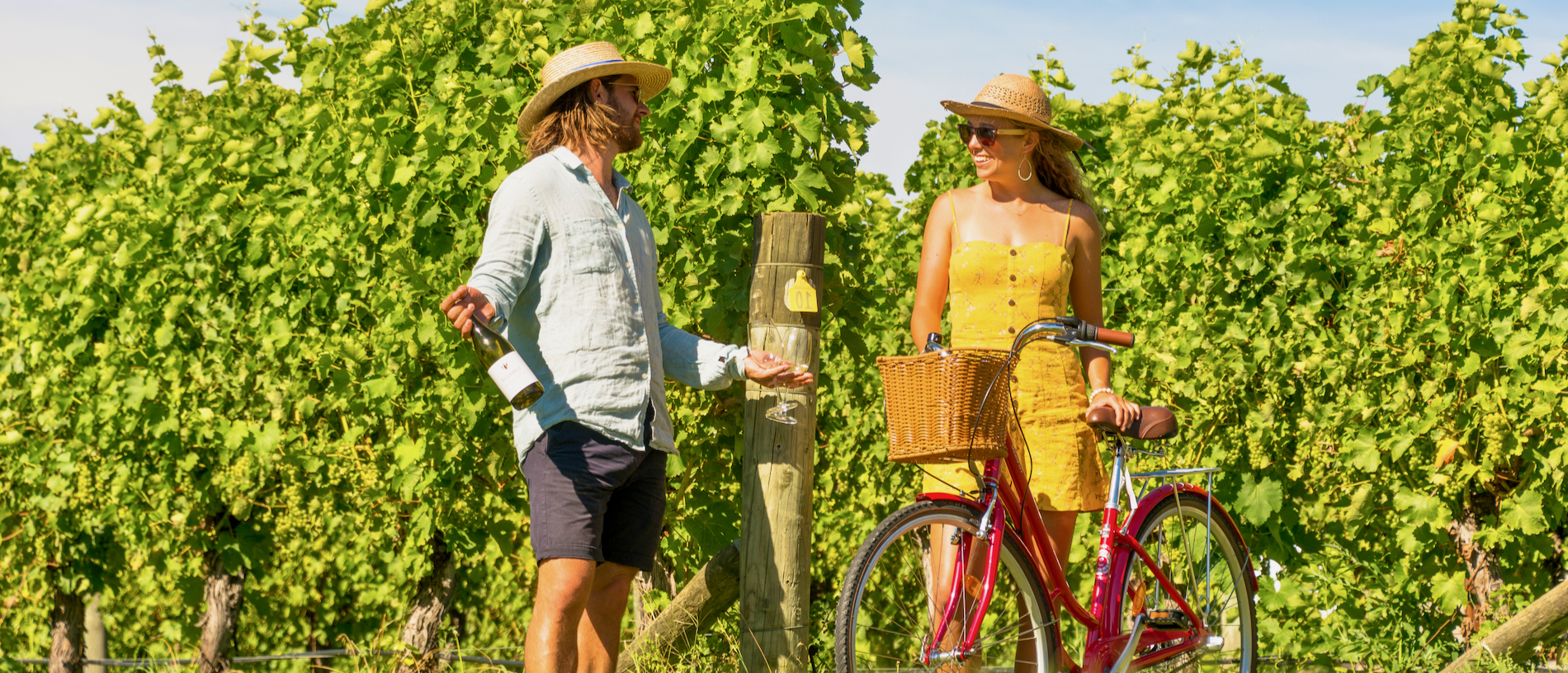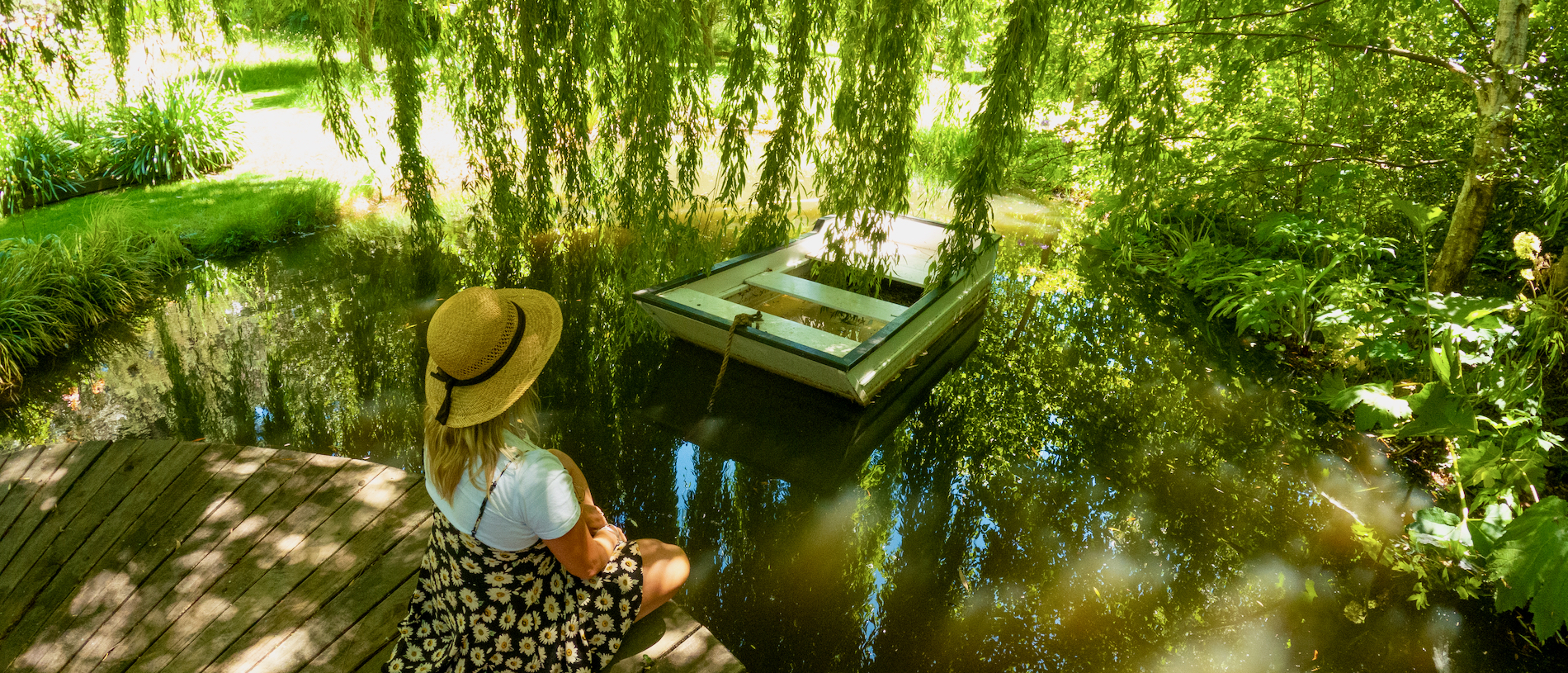
Sip and cycle your way around Renwick
With its high sunshine hours, minimal rainfall and more than 20,000 hectares of vines, Marlborough is the biggest wine-producing region in New Zealand.

Immerse yourself in the unique landscapes of Marlborough with these 10 Kiwi Gems – from isolated islands in the Marlborough Sounds to a gorgeous garden, a movie star lighthouse, a wildlife sanctuary and some incredible pink lakes.
D’Urville Island / Rangitoto ki te Tonga in the Marlborough Sounds, is remote, to say the least. It’s accessible from French Pass, which is a two-hour drive from Nelson or Blenheim, and involves a short but very exhilarating boat ride across a notoriously wild piece of water. But once you’re there, it’s magic. There is a car ferry and having a car on the island is good, as it’s quite a big island and worth exploring all corners. If you elect to leave your car at French Pass, there is still lots to do there, with walking tracks, lovely beaches, camping spots and fishing opportunities. The lodge at Catherine Bay is lovely and not super expensive. There’s history, community, ecology and more to learn about whilst visiting D’Urville Island, or you could relax in its isolated splendour and ignore the world’s worries for a while.
Marlborough’s coastline north of Blenheim is rugged and intriguing. Head to Rarangi and explore the craggy coast around Whites Bay linked by a network of walking trails. Monkey Bay is a small, secluded beach framed by rocky cliffs that can be reached on a short walk around the headland from the northern end of Rarangi Beach. Nearby Whites Bay was named after an American sailor, Black Jack White, who abandoned his whaling ship in 1828 to live with local Māori.
The tiny Motuara Island sits near the entrance to Queen Charlotte Sound Tōtaranui opposite Ship Cove. You can get there via private boat, on a scenic cruise or by water taxi. At the beginning of the 20th Century, the island was used for farming, but in 1920 Motuara was converted into a reserve. Today, the island is a predator-free bird sanctuary, and visitors can walk to a lookout at the top of the island amidst abundant tūī, korimako, cheeky kakaraui South Island robins and pīwakawaka, as well as yellow-crowned parakeets and around 200 South Island tieke saddleback. The island is also home to many korora little blue penguins, with nesting boxes dotted alongside the track. Gently lift the lid to see the birds and their fluffy chicks. The viewing platform at the 128m summit is like standing at the wheelhouse of a ship about to embark on the Cook Strait crossing.
The classic black and white striped lighthouse at Cape Campbell sits atop distinctive white cliffs that rise from Clifford Bay. The lighthouse was made famous by its starring role in the 2016 film The Light Between Oceans. It’s a popular spot for picnics and camping, but the lighthouse can only be reached at low tide on a walk along Marfells Beach. The light here was first lit in August 1870, though the original wooden tower was replaced by a cast iron one in 1905. Fun fact: Camp Campbell is one of just three striped lighthouses in New Zealand – the others being Dog Island Lighthouse in Foveaux Strait and the red and white striped Cape Palliser Lighthouse in Wairarapa.
Did you know that New Zealand has incredible pink salt ponds? Lake Grassmere, Kāpara te hau in Te Reo, is actually a large, shallow lagoon right next to the Marlborough coast. The lake has been used since 1942 to produce salt – more than 70,000 tonnes of it each year. From the lake, the evaporating and increasingly salty water is moved into crystallising ponds where the brine turns to photogenic shades of pink and purple. The colour is caused by microscopic green algae that changes to pink in the high salt concentration – it’s the same phenomena that gives the Red Sea its name. While there are no public tours or sales at the saltworks, you can see the multi-coloured ponds and 20 metre-high mountains of salt from the road. Summer is the best time to visit to catch the most vibrant hues, as salt harvesting begins each year in March.
Get up close with some of New Zealand’s rare and endangered species at Koru Native Wildlife Centre near Blenheim. The Grovetown centre was established more than 20 years ago as a Department of Conservation accredited breeding centre for at-risk species. Today’s residents that you can see on a guided tour include green geckos, beautiful yellow-crowned kākāriki and giant wētā – the heaviest insects in the world. Learn about the breeding programme and the lifecycle of these unique creatures. The animals bred at Koru Native Wildlife Centre are eventually released into carefully selected areas with extensive pest control to give them the best chance of survival.
Hit the trails at the sprawling Wither Hills Farm Park – a massive 1,100-hectare sheep and beef farm on the outskirts of Blenheim. With views over the magnificent vineyards of the Wairau Valley and to the coast at Cloudy Bay, the park includes a mixture of more than 60km of walking and mountain bike trails suitable for all levels of fitness. Beginner riders and families should check out the easy Lower Farm Track and Rifle Range Trail at the base of the hills, while experts can tackle the technical Mount Vernon Traverse of the ridge lines. For walkers, there are trails ranging from 1km - 7.6km, however as the park is a working farm, no dogs are allowed.
Explore the edges of the stunning Pelorus Te Hoiere Sound from Havelock on the network of tracks at Cullen Point. Cullen Point is a Department of Conservation reserve 4.5km from Havelock on the Queen Charlotte Drive, which runs between Picton and Havelock. Take the hour-long Cullen Point Loop Track through regenerating bush, mānuka and ferns for views over the sound. If you’re pressed for time, the short Cullen Point Lookout Track is a ten-minute stroll that rewards you with vistas over Mahau Sound and nearby estuaries. While both tracks are relatively easy-walking, they’re narrow in places and tree roots mean the walks are not suitable for wheelchairs or buggies.
At 1,230 metres, Mount Stokes is the highest point in the Marlborough Sounds. Named after Captain John Stokes, who charted the entire coastline of New Zealand between 1848 and 1851, the Māori name for the highest point in the Marlborough Sounds is Pororangi. The 6.8km walk takes you to a saddle overlooking Anakoha Bay and Forsyth Island, then on through mountain bush to the sub-alpine summit of Mount Stokes. Breathtaking views of the Marlborough Sounds abound. Some parts of the track are very steep and you’ll need sturdy footwear to tackle the rocky terrain. As the summit is exposed, be safe and don’t go past the bush line if visibility is poor.
A six-star ranking with the New Zealand Gardens Trust means that Barewood Garden in Seddon is acknowledged as a Garden of International Significance. A remarkable feat for a property that has been cultivated as a labour of love over many years. Surrounding a century old homestead, Barewood combines semi-formal garden spaces, potager gardens, weeping wisteria and old-fashioned roses amongst mature original trees in an ever-so romantic setting. The property’s original two-room cob cottage, once home to a family of eight, has been transformed into a gift shop. Barewood Garden is open to visitors by appointment between October and April.